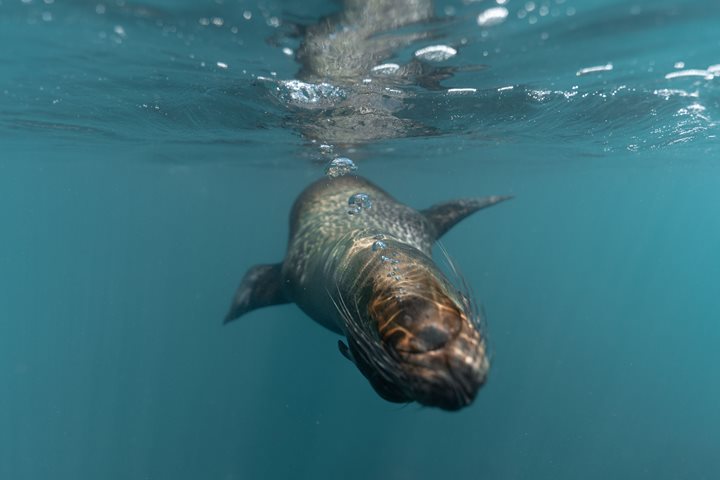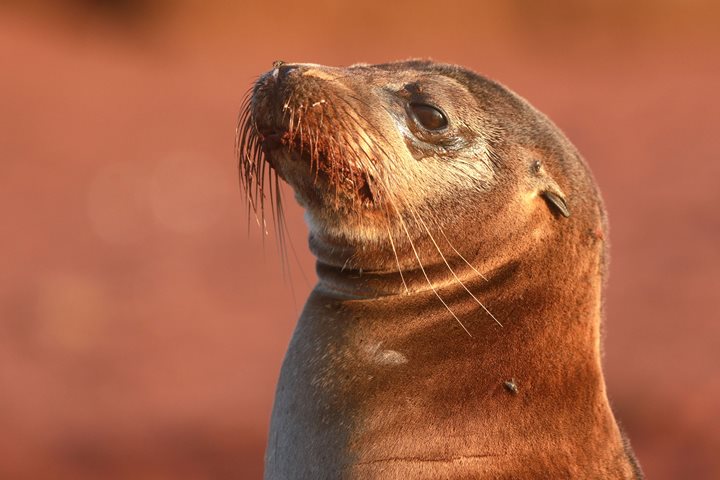Quite a day full of fantastic experiences! After a night-long navigation we reached the western isle, the most remote region of the Galápagos archipelago. In the early morning sunshine we woke up to stunning landscapes of elegant volcanoes and lava fields. The north of Isabela is crossed by the equator line, so a ceremony to celebrate this event was a must! When we dropped anchor at Punta Vicente Roca, we suddenly felt we had somehow reached some Nordic fjords, with the tall, dark outer slopes of Ecuador Volcano nearby. Fernandina to the west is the youngest of the Galápagos Islands and is rather dull and inhospitable-looking, but as soon as we set foot on it we realized we had reached a new dimension. It is a world entirely dominated by reptiles, where the endemic marine iguanas are king. On the nearby shores, endless numbers of marine turtles, and young Galápagos sea lions made this a day we shall never forget.
- Daily Expedition Reports
- 09 Jan 2018
Isabela and Fernandina Islands, 1/9/2018, National Geographic Islander
- Aboard the National Geographic Islander
- Galápagos
Gaby Bohorquez, Naturalist
Gaby was born and raised in Guayaquil, Ecuador. Her first job in the Galapagos was on board a 90-passenger cruise ship as the cruise director’s assistant, and she fell under the spell of the Enchanted Isles. She returned to Guayaquil to study at the ...
Read MoreJulio Rodriguez, Videographer
Born and raised in Ecuador, the son of Spanish and American parents, Julio developed a passion for storytelling and environmental conservation at an early age. After majoring in History at Carleton College (Minnesota), with a thesis on the Basque ant...
Read MoreShare Report
Related Reports
11/23/2022
Read
National Geographic Islander II
Isabela and Fernandina
Our day began with the chance to point out a lot of interesting geological features as we enjoyed Zodiac tours along a massive flank of Ecuador Volcano on Punta Vicente Roca. In the afternoon, we took a sunny walk on Punta Espinoza on Fernandina Island. We spotted many iguanas, and a bunch of sea lions hanging around, too.
11/22/2022
Read
National Geographic Islander II
North Seymour & Rabida Islands
Relatively small and low compared to neighboring Santa Cruz, North Seymour is located to the north of Baltra. The island is dry with predominantly low shrubs, like prickly pear cacti. The incense trees are bare during the dry season. Seabirds like frigatebirds and blue-footed boobies nest on the island, and sea lions rest on the sand when they are not fishing. Land and marine iguanas also live here. Rabida is in the middle of the archipelago and has a striking red sand beach. We observed a small colony of sea lions of all ages resting or nursing. Behind the beach, American flamingos nest in a brackish lagoon. This island is full of contrasts and wildlife that we enjoyed observing during this day of expedition.









